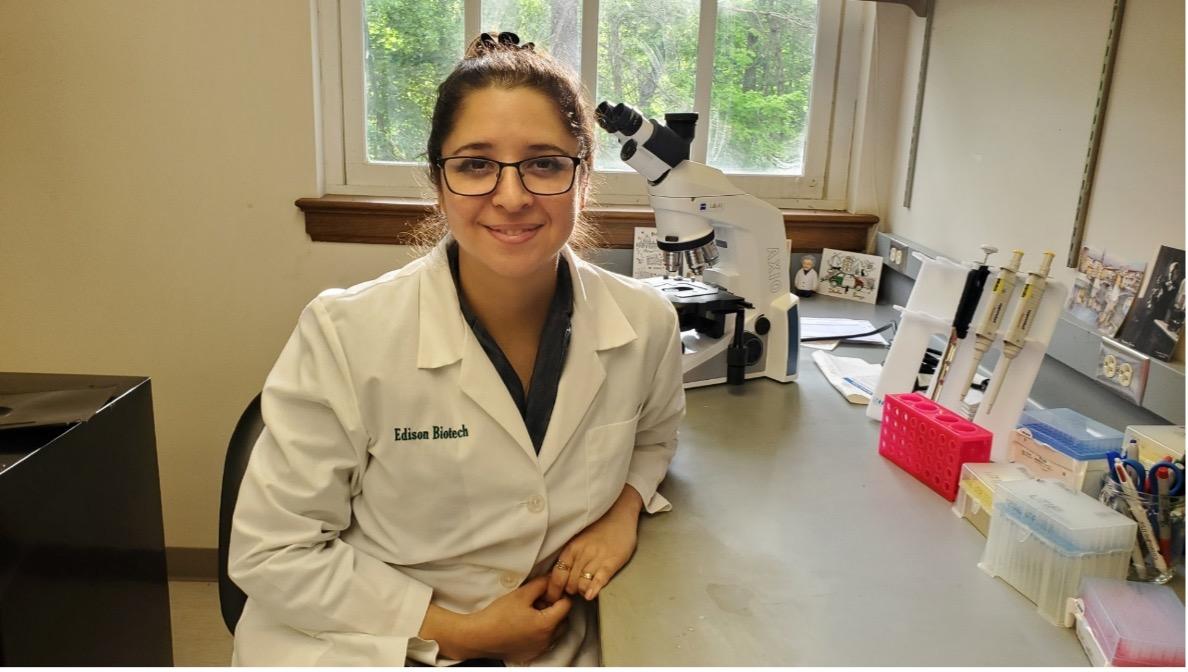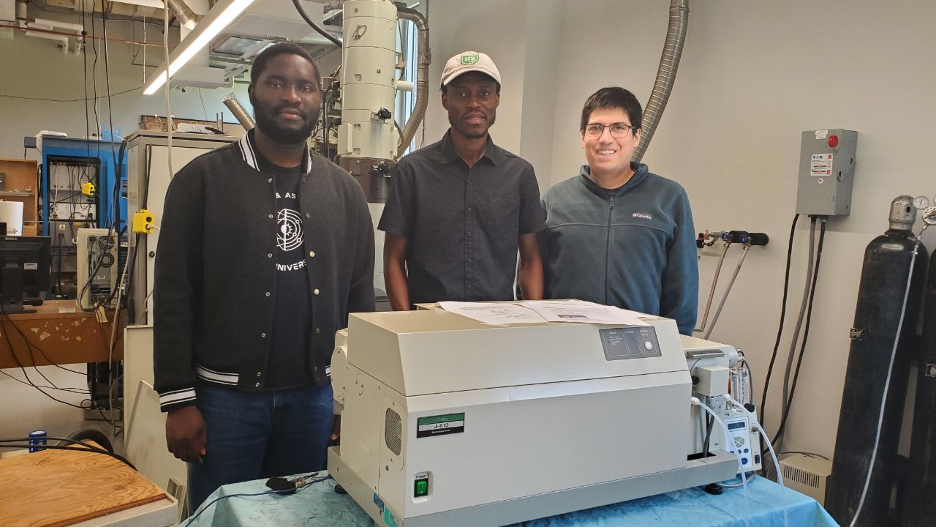
Biotesting with much less expensive materials and technologies at OHIO: Replacing colloidal gold

A group of Ohio University researchers have developed a new kind of biotesting kit using novel nanotechnological inexpensive materials. These common test kits, widely used during the COVID-19 pandemic, usually use as key working components one of the most expensive materials on Earth: gold. The team has now proposed and demonstrated that less expensive materials, such as copper and titanium, can perform as good as gold or even better. This study just appeared in Nano Letters [1] and can be also found in BioRxiv.
Nanoparticles, little balls typically 10000 times smaller than the human hair thickness, are key components in biotesting test kits. These kits are bioengineered by design as follows: the main idea is to attach proteins and/or biomolecules to the nanoparticle’s surface, such that the nanoparticle acts as a vehicle. Then such attached biomolecules recognize a desired molecule present in wet samples from our bodies, molecule associated to a given disease or viral infection, turning on the test line on the kit. This was the working principle we endlessly used during the COVID-19 pandemic: if both the test line and the control line of the kit turned on, we were infected; if only the control line turned on, we were fine.
The OU team’s work consisted of using for the first time either titanium nitride (TiN) or copper-with-gold-shells (Cu@Au) nanoparticles as components in test kits. These nanoparticles in particular are made with inexpensive materials and with efficient technologies such as laser ablation. The team now showed that tests done with TiN and Cu@Au, worked for sensing two molecules: a labelling toy molecule called FITC, and a more significant one called cardiac troponin, which happens to increase in the blood when a heart attack has started.
This project was a collaborative work between the physics and computer science teams, with two groups from chemistry and biochemistry. The research was directed by Physics Professors Dr. Govorov and Dr. Kordesch and executed mainly by EBI’s investigator Veronica Bahamondes, Physics postdoc Oscar Avalos, Chemistry and Biochemistry’s PhD student Eli Skelton, and Physics’s PhD student Eva Santiago. Other professors from OU involved are Dr. Cimatu from Chemistry and Biochemistry, and Dr. Wang from the School of Electrical Engineering and Computer Science, and Dr. Wu from Chemistry and Biochemistry and EBI. Two PhD students from Govorov’s group, Ridwan Hussein and Richard Sottie, assisted in computational simulations of nanocrystals of different shapes, helping to understand the optical responses of nanomaterials.
Dr. Christoph Sikeler from Ludwig Maximilians University (Germany), Professor Dongling Ma from Institut National de la Recherche Scientifique (Canada), and Professor Andrei V. Kabashin from Aix-Marseille University (France) were key international collaborators. Likewise, critical domestic contributions were necessary from Dr. Olga Baturina (United States Naval Research Laboratory, Washington) and Dr. Joseph M. Slocik (Air Force Research Laboratory, Wright Patterson Air Force Base).


